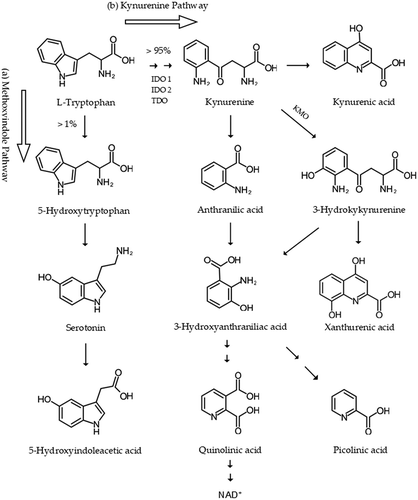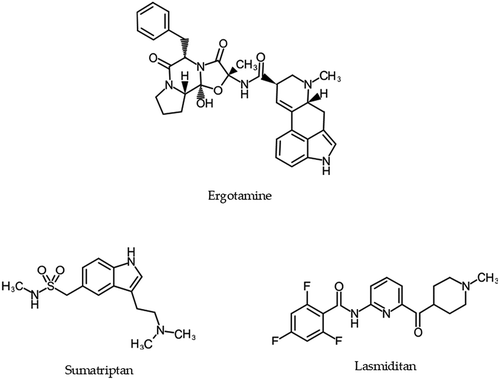Figures & data
Table 1. Clinically approved antimigraine drugs and their targets. 5-HT1A-D: 5-hydroxytryptamine receptors subtypes, A-D: adrenergic receptors subtypes, D1-2: dopamine receptor subtypes [Citation3–5]
Table 2. 5-HT1 receptor subtypes, location of expression pertaining to migraine, functions and ligands clinically approved for migraine [Citation3–5]
Figure 2. L-tryptophan metabolism: the methoxyindole and kynurenine pathways. A majority of tryptophan (TRP) is metabolized through the TRP-kynurenine (KYN) pathway, catalyzed by several key enzymes including indoleamine 2,3-dioxygenase (IDO) 1, IDO 2, tryptophan-2,3-dioxygenase (TDO), and kynurenine 3-monooxygenase (KMO) into several bioactive metabolites including kynurenine (KYN), kynurenic acid (KYNA), 3-hydroxykinurenine, anthranilic acid (ANA), xanthurenic acid (XA), 3-hydroxyanthuranilic acid, 5-hydroxyindoleacetic acid, xanthurenic acid (XA), and quinolinic acid. IDO 1, IDO 2, and KMO enzymes and KYN metabolites were shown to be involved in the pathogenesis of migraine


